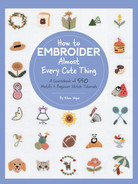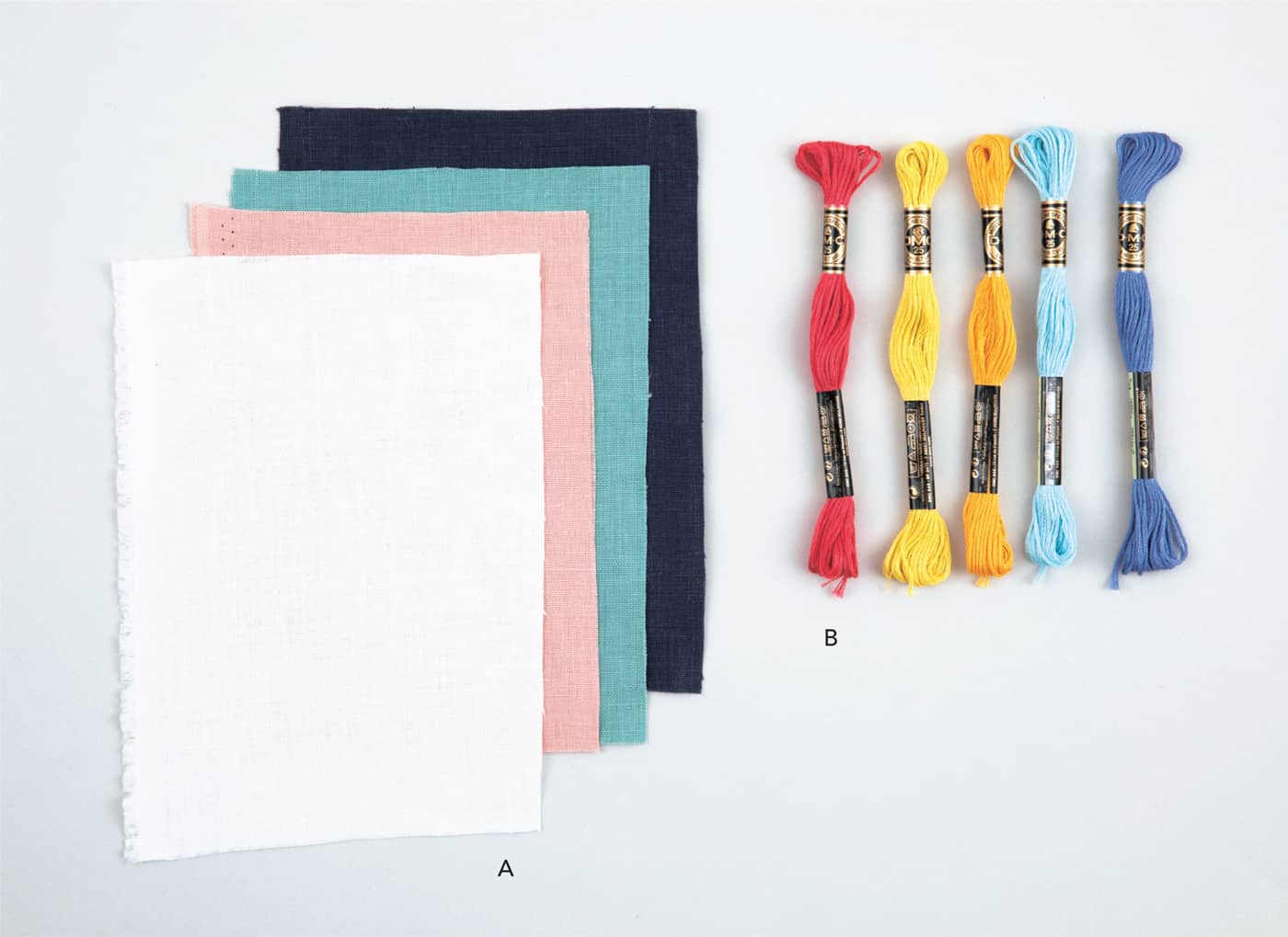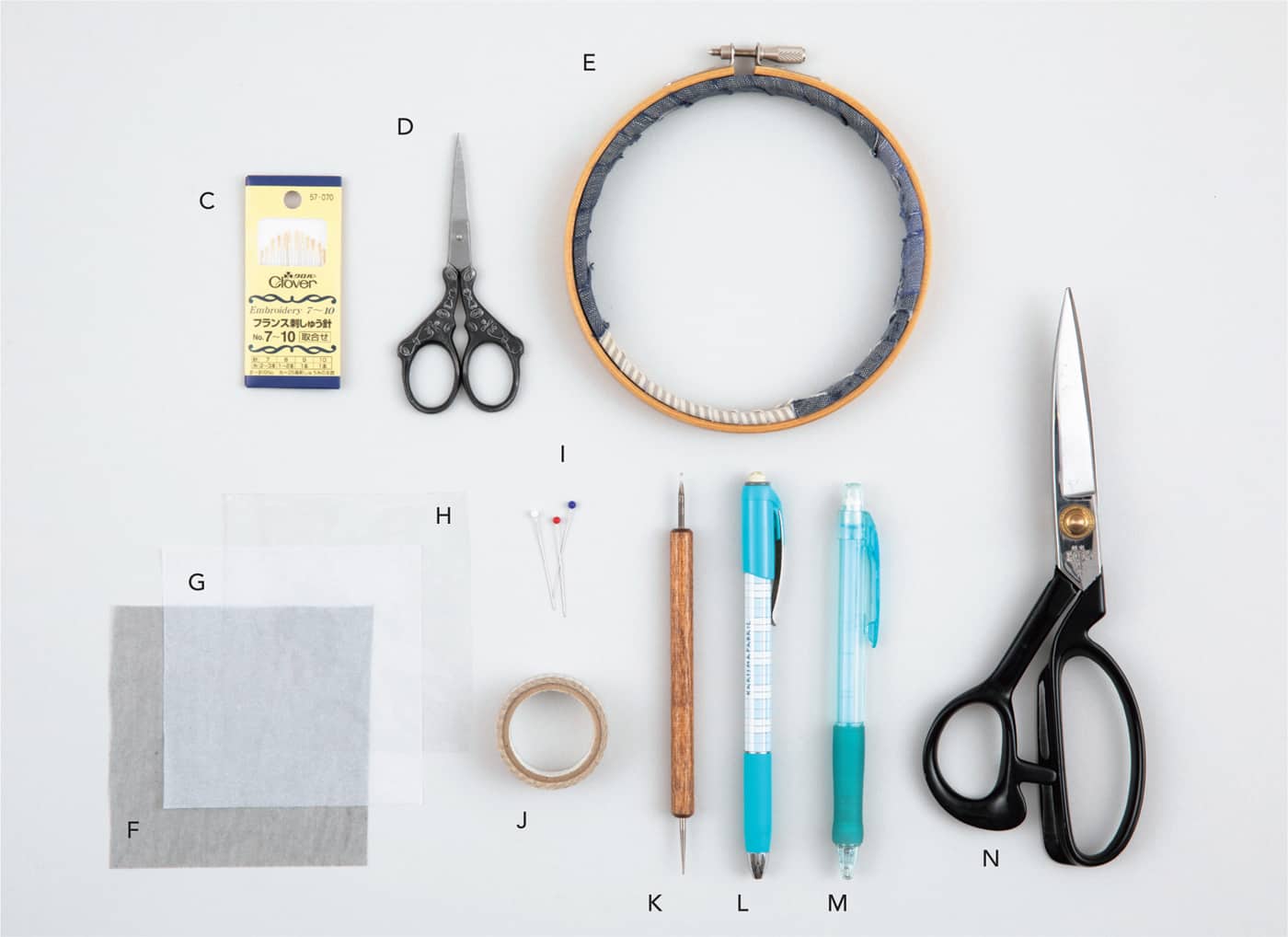tools & materials
A. Linen fabric: All of the embroidery in this book was done on linen fabric.
B. No. 25 embroidery floss: This embroidery floss is composed of six thin strands that are loosely twisted together. Separate the strands and use the number noted in the embroidery instructions. Three different brands of embroidery floss were used for the designs in this book (DMC, Olympus, and Cosmo).
C. Embroidery needles: Designed specifically for embroidery, these needles feature a longer eye, allowing for easy threading. Select your needle size based on the number of strands of thread used.
D. Thread snips: Use to cut embroidery floss.
E. Embroidery hoop: Use an embroidery hoop to hold the fabric taut while stitching.
F. Carbon chalk paper: Use to transfer the embroidery designs onto fabric. Refer to here for instructions on transferring the designs.
G. Tracing paper: Use to copy the embroidery designs from the book.
H. Cellophane: Use in conjunction with tracing paper and carbon chalk paper to transfer the embroidery designs onto fabric. The cellophane is optional, but will protect the copied design from smudging and will allow for reuse in the future.
I. Pins: Use to hold the copied design in place when transferring it onto the fabric.
J. Masking tape: Use to hold the tracing paper in place when copying the embroidery designs from the book.
K. Stylus: Use to trace the embroidery design during the transfer process. You can also use an empty ballpoint pen.
L. Chalk pen: Use an erasable chalk pen to hand draw designs or fill in areas of the embroidery design that did not transfer completely.
M. Mechanical pencil: Use to copy the embroidery designs onto tracing paper.
N. Fabric scissors: Use to cut fabric.


